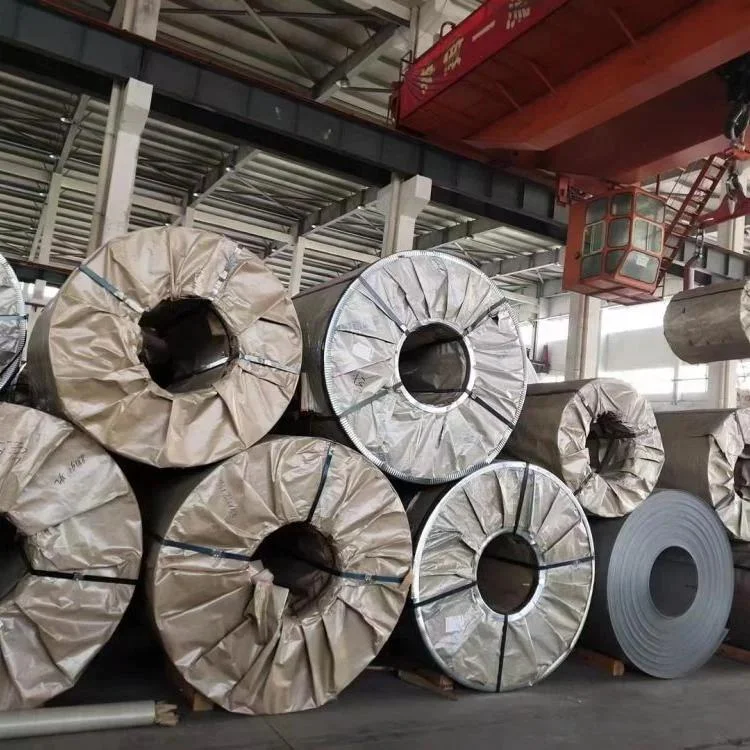The Manufacturing Process of Stainless Steel Coils: A Comprehensive Guide
Stainless steel coils are essential components in various industries, known for their durability, corrosion resistance, and aesthetic appeal. At Yuanjian, we specialize in producing high-quality stainless steel coils that meet diverse specifications and applications. This blog will provide a comprehensive overview of the manufacturing process of stainless steel coils, highlighting key steps, quality control measures, and the benefits of using stainless steel in various applications.

Understanding Stainless Steel Coils
Stainless steel coils are flat rolled products made from stainless steel, available in various grades and finishes. They are widely used in industries such as construction, automotive, food processing, and electronics due to their excellent mechanical properties and resistance to rust and corrosion. Common grades include 304, 304L, 316, and 316L, each offering unique characteristics suited for specific applications.
The Manufacturing Process of Stainless Steel Coils
The manufacturing process of stainless steel coils involves several key steps:
1. Raw Material Selection
The first step in producing stainless steel coils is selecting high-quality raw materials. The primary components of stainless steel include iron, chromium, nickel, and other alloying elements. The specific composition depends on the desired grade of stainless steel. For example:
- 304 Stainless Steel: Contains 18% chromium and 8% nickel.
- 316 Stainless Steel: Contains 16% chromium, 10% nickel, and 2% molybdenum for enhanced corrosion resistance.
2. Melting and Casting
Once the raw materials are selected, they are melted together in an electric arc furnace (EAF) or a basic oxygen furnace (BOF). The molten metal is then cast into large slabs or billets through continuous casting processes. This step ensures a uniform composition and eliminates impurities.
3. Hot Rolling
After casting, the slabs are heated to high temperatures (around 1100°C) and passed through hot rolling mills. This process reduces the thickness of the slabs while increasing their length and width. Hot rolling also enhances the mechanical properties of the stainless steel by refining its microstructure.
4. Cold Rolling
Following hot rolling, the stainless steel is subjected to cold rolling processes to achieve precise thickness and surface finish. Cold rolling involves passing the material through rollers at room temperature, which not only reduces thickness but also improves surface quality and dimensional accuracy.
- Thickness Control: Cold rolling allows for tighter tolerances, typically within ±0.1mm.
- Surface Finish: Various surface finishes can be achieved through cold rolling techniques.
5. Annealing
To relieve internal stresses created during rolling and improve ductility, the cold-rolled stainless steel coils undergo an annealing process. This involves heating the coils in a controlled atmosphere furnace to a specific temperature followed by controlled cooling. Annealing enhances the corrosion resistance of stainless steel by promoting a uniform microstructure.
6. Pickling and Passivation
After annealing, coils are treated with pickling solutions (usually acids) to remove oxides and scale formed during processing. This step is crucial for achieving a clean surface that is free from contaminants.
- Passivation: Following pickling, a passivation process may be applied to enhance corrosion resistance by forming a protective oxide layer on the surface.
7. Cutting and Slitting
Once the coils have been processed and treated, they are cut or slit into desired widths based on customer specifications. This step allows for customization according to specific applications in various industries.
8. Quality Control
Quality control is an integral part of the manufacturing process at Yuanjian. Each batch of stainless steel coils undergoes rigorous testing to ensure they meet industry standards:
- Chemical Composition Analysis: Ensuring that the alloying elements meet specified grades.
- Mechanical Testing: Evaluating tensile strength, elongation, hardness, and impact resistance.
- Surface Inspection: Checking for defects such as scratches or imperfections.
9. Packaging and Delivery
After passing quality checks, stainless steel coils are carefully packaged to prevent damage during transportation. They are typically wrapped in protective materials and placed on pallets for secure shipping.
Benefits of Using Stainless Steel Coils
Stainless steel coils offer numerous advantages across various applications:
- Corrosion Resistance: Ideal for environments exposed to moisture or chemicals.
- Durability: High tensile strength ensures longevity even under stress.
- Aesthetic Appeal: Available in various finishes that enhance visual appeal.
- Versatility: Suitable for a wide range of applications from kitchen appliances to industrial equipment.
Conclusion
The manufacturing process of stainless steel coils is intricate and requires careful attention to detail at every stage—from raw material selection to quality control measures. At Yuanjian, we pride ourselves on producing high-quality stainless steel coils that meet diverse specifications for various industries.
By understanding this comprehensive manufacturing process, you can appreciate the value that quality stainless steel coils bring to your projects. If you have any questions about our products or need assistance with your specific requirements, please don't hesitate to reach out! Together, we can find the perfect solution for your needs in stainless steel applications.
- Art
- Causes
- Crafts
- Dance
- Drinks
- Film
- Fitness
- Food
- Juegos
- Gardening
- Health
- Inicio
- Literature
- Music
- Networking
- Otro
- Party
- Religion
- Shopping
- Sports
- Theater
- Wellness


